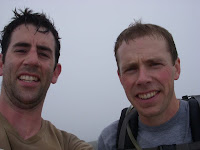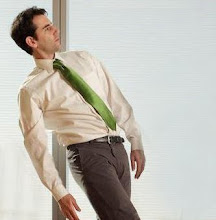 As of late afternoon on Thursday, July 7 the only thing Mike and I had decided upon was that it made more sense to meet in the Adirondacks than for me to come all the way to Vermont from Michigan. I discovered The Great Range Traverse while looking around online, and it seemed rightup our alley. It also fit our penchant for doing things with no matching physical preparation or training, causing us to push our bodies beyond what should be possible. So I really wasn't surprised to find Mike and myself setting out on this hike 36 hours later
As of late afternoon on Thursday, July 7 the only thing Mike and I had decided upon was that it made more sense to meet in the Adirondacks than for me to come all the way to Vermont from Michigan. I discovered The Great Range Traverse while looking around online, and it seemed rightup our alley. It also fit our penchant for doing things with no matching physical preparation or training, causing us to push our bodies beyond what should be possible. So I really wasn't surprised to find Mike and myself setting out on this hike 36 hours later We met in the parking lot of the Noonmark Diner in Keene Valley, NY around 6:30pm on Friday. I'd made the trip from Ann Arbor by heading across Canada and through Canton, Tupper Lake, Saranac Lake, and Lake Placid (route here) - eleven hours of total driving, having been slowed down considerably by unexpected Canadian traffic north of Toronto. We left my car in the Roostercomb Trailhead parking lot across the street, each putting a bag of clothes and shoes in that we'd want at the finish, and we then drove to Southern Meadows, lucking out by finding an open camping site immediately.
Minutes after eating a Clif bar each (the unofficial sponsor
 of many a personal athletic undertaking), our hike began with a quick 3/4 mile walk from our site to the trailhead, where we signed in, took our time stretching, and finally headed up Marcy. Official start time was somewhere around 8:10am. The trail up Marcy wasn't too much of a killer, but we were in the mist and wind and were pretty soaked upon reaching the summit.
of many a personal athletic undertaking), our hike began with a quick 3/4 mile walk from our site to the trailhead, where we signed in, took our time stretching, and finally headed up Marcy. Official start time was somewhere around 8:10am. The trail up Marcy wasn't too much of a killer, but we were in the mist and wind and were pretty soaked upon reaching the summit. Haystack was also in the clouds with very high winds, but just as we turned and left the summit (approx. 12:15pm) the clouds began to part, allowing us to catch glimpses of the dramatic peaks, ridges, and valleys. Basin Mtn. was #3 and proved to be a challenging near-vertical climb, especially since the trail off of Haystack brought us so far down between the peaks.

Still hiking a steady pace (we joked about having little change in our uphill speed rate no matter what), we summited Saddleback (#4), where we sat to rest and snack for a bit. Then it was up Gothics (#5) and the notable steep faces with fixed wires for those who want them.
Once atop Gothics, the climbs leveled out between mountains. Armstrong (#6) and Upper Wolfjaw (#7) were quick hikes without the then expected rugged and steep rocks to ascend to reach the top. Lower Wolfjaw did give an extra fight, making us work for the final 8th peak of the day.

We reached the car and the Roostercomb Trailhead exactly 11hrs after we'd started. Time for a change of clothes and a grilled cheese each at the Noonmark.
